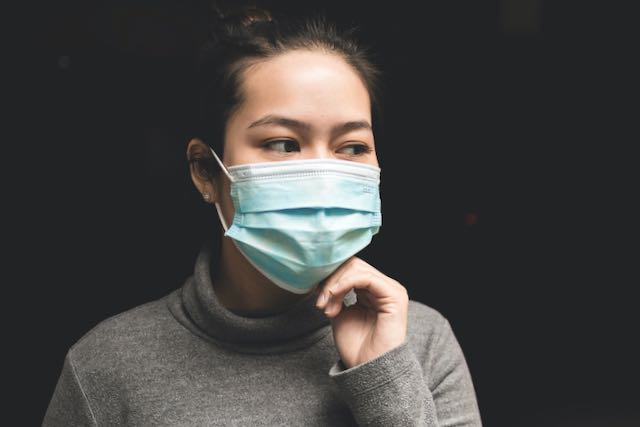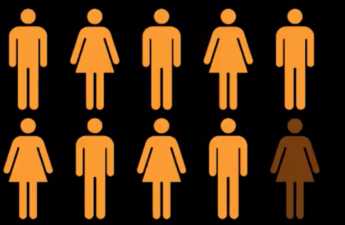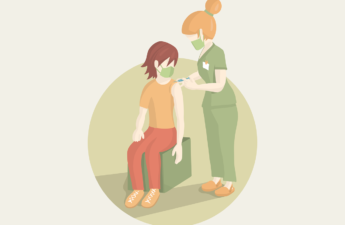
Navigating two truths for ‘re-opening’- We’ve made tremendous progress and we also still have COVID-19 spreading
From Public Health – Seattle & King County
With most of Washington state’s COVID-19 restrictions ending by June 30, communities across King County are making preparations.
Now, we face two truths.
Truth 1: The State of Washington is lifting restrictions because the current levels of COVID-19 are low enough overall – largely due to vaccination – that the risk of outbreaks, hospitalizations and deaths has fallen dramatically.
Truth 2: COVID-19 is still here, and more contagious variants are spreading locally in King County and nationally. Some of these newer variants are also more likely to lead to hospitalization if you are unvaccinated.
What’s your risk?
Navigating these two truths will require new ways of thinking about risk and uncertainty. People who are fully vaccinated are at very low risk of COVID-19 illness and are unlikely to infect others. But many people are not able to be vaccinated at this time, for example due to their age or certain medical conditions – including children under age 12.
- If you are vaccinated, this means balancing the joy of returning to activities and people we have missed, while respecting and supporting others who are still at risk.
- If you are unvaccinated, this means the joy of gathering with loved ones calls for remaining vigilant and continuing to wear a mask, keeping a safe distance, and avoiding crowded indoor gatherings.
“As we transition away from this phase of government mandates, everyone should understand that when we are in indoor spaces, there will be some risk,” said Dr. Jeff Duchin, Health Officer for Public Health—Seattle & King County.
“Each of us will need to be comfortable with the level of risk we are willing to take. Most vaccinated people will be at very low risk. But there are some people who could not be vaccinated yet or remain at risk for other reasons. So, it will be important to understand your level of personal risk, the risk to others, and the overall risk in the community – and take steps to protect yourself and the people around you.”
Even vaccinated people may choose to continue wearing masks in public places. Some vaccinated people may choose to continue wearing a mask if they are at increased risk for severe infection, have an underlying health condition, or are in close contact with someone at increased risk. Others may choose to continue to wear a mask to support mask-wearing by unvaccinated people or because they feel more comfortable doing so. Some people also wear masks to protect themselves from other respiratory illnesses or allergens.
Any organization or business may choose to add a layer of protection for employees and clients through capacity limits, physical distancing, or mask requirements for all – keeping in mind that COVID-19 is primarily airborne and spreads easily person to person. And employers must continue following guidance from Washington Labor and Industries, meant to keep workers safe. This calls for requiring proof of vaccinations before employees begin working without masks. Vaccinated employees also may choose to wear masks for an extra layer of protection or to show support for others who are wearing masks.
Public Health continues to promote these protective steps:
- Get vaccinated if you are eligible and encourage others to be vaccinated. When more people are vaccinated, each community is better protected. King County aims to achieve at least 70% fully vaccinated across all racial and ethnic groups, eligible ages, and geographies. Even at that level, COVID-19 will continue to spread to unvaccinated people, so having as many people vaccinated as possible is truly the best protection for us all. Vaccines are free and available at dozens of community locations , and mobile vaccination can come to your organization.
- Keep a good-quality, snug-fitting mask with you – and wear it when asked.
- Any business or organization may continue to require masks for all customers or visitors.
- Anyone who is unvaccinated should wear a mask in indoor public spaces, as described in the Washington state masking order. The state order also requires everyone to wear masks in some settings, including schools and childcare, healthcare, homeless shelters, and correctional facilities.
- Improve indoor air ventilation and filtration. We have learned how easily the virus spreads indoors, especially in crowded spaces. Businesses and all organizations with indoor facilities should take steps to improve air ventilation and filtration. This will help prevent future outbreaks, including as we get into cooler weather when the virus spreads more readily and more people gather indoors. (More information available at Improving Indoor Air.)
- Outdoors is better than indoors, for gatherings. COVID-19 spreads much more easily indoors than outdoors. If you’re planning or attending large gatherings, the risks are lower outdoors.
- Get tested if you have symptoms or an exposure. COVID-19 is still spreading, and the new variants are even more contagious. Getting tested allows you to take steps to protect family and friends. Testing is free.
As always, hand washing is a good way to prevent the spread of communicable diseases.
For anyone traveling, rules remain in place from the federal Centers for Disease Control & Prevention (CDC). International travelers should be aware of evolving requirements and check for updates. Face coverings are required on public transportation and on airplanes and at airports.
“The bottom line remains that the more people are vaccinated, the less COVID-19 will circulate in our communities and the safer we all will be,” said Duchin.
Public Health will be providing additional resources to answer questions:
- Frequently Asked Questions webpage and flyer, about re-opening for stores, restaurants, and any organization with public contact
- Updated posters about masks for businesses and organizations (some posters are available now from Washington Department of Health)
- Blog: How to keep children under age 12 safe from COVID-19 (flyer coming soon)
- Blog: Why many people may continue to wear masks to protect people with underlying medical conditions (coming soon)
- Blog: Restaurants working to prevent COVID-19 outbreaks as they expand service (coming soon)
Originally published June 25, 2021


